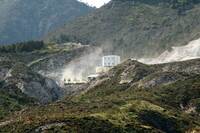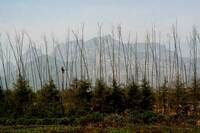- England
- Scotland
- France
- Holland
- Germany
- Italy
- Spain
- Portugal
- USA
- China
- Japan
- India
- Iran
- Advice
- Gardens
- England
- Scotland
- France
- Holland
- Germany
- Italy
- Spain
- Portugal
- USA
- China
- Japan
- India
- Iran
- Advice
- Garden Tours
Book: Landscape Planning and Environmental Impact Design: from EIA to EID
Chapter: Chapter 6 Mineral working, planning and design
Concealment has been favoured by planners because it is the least contentious approach: out of sight, out of mind. If an environmentally unpleasant operation must be located in a beautiful place, it is logical that its harmful effects should be minimised by trying to conceal the mine, though noise, dust and traffic may be unconcealed. The Scott Report on Land Utilisation in Rural Areas (1942), which laid the foundation for mineral planning in Britain, explained the policy as follows: Extractive industries, almost more than any others, are harmful to agriculture and destructive of the beauty of the countryside: their coming into the countryside cannot be avoided in the national interest and therefore care must be taken to minimise their destructive effects (Ministry of Works and Planning 1942: 61). The most characteristic feature of the concealment approach is the use of ridge lines, tree screens and 'amenity banks' to hide the mineral operation and mitigate such undesirable side effects as noise and dust (Downs & Stocks 1977: 43). In some cases these devices have worked well, but they have also failed through inept or inappropriate application. A line of trees on the rim of a cliff functions more like a flag, signalling the quarry's location, than as an effective screen. The trees become parched because, on a quarry edge, soil conditions tend to be very hot and very dry. Once the extraction phase of a mineral operation has been completed the concealment approach leads to the idea that the land should be 'restored' to its original shape and preï¾extraction use. In America this is known as the 'backï¾toï¾contour' restoration philosophy. It can be applied to certain types of surface mining operation but, strictly speaking, the land can never be 'restored' to its original condition: the extraction of minerals always changes something.

